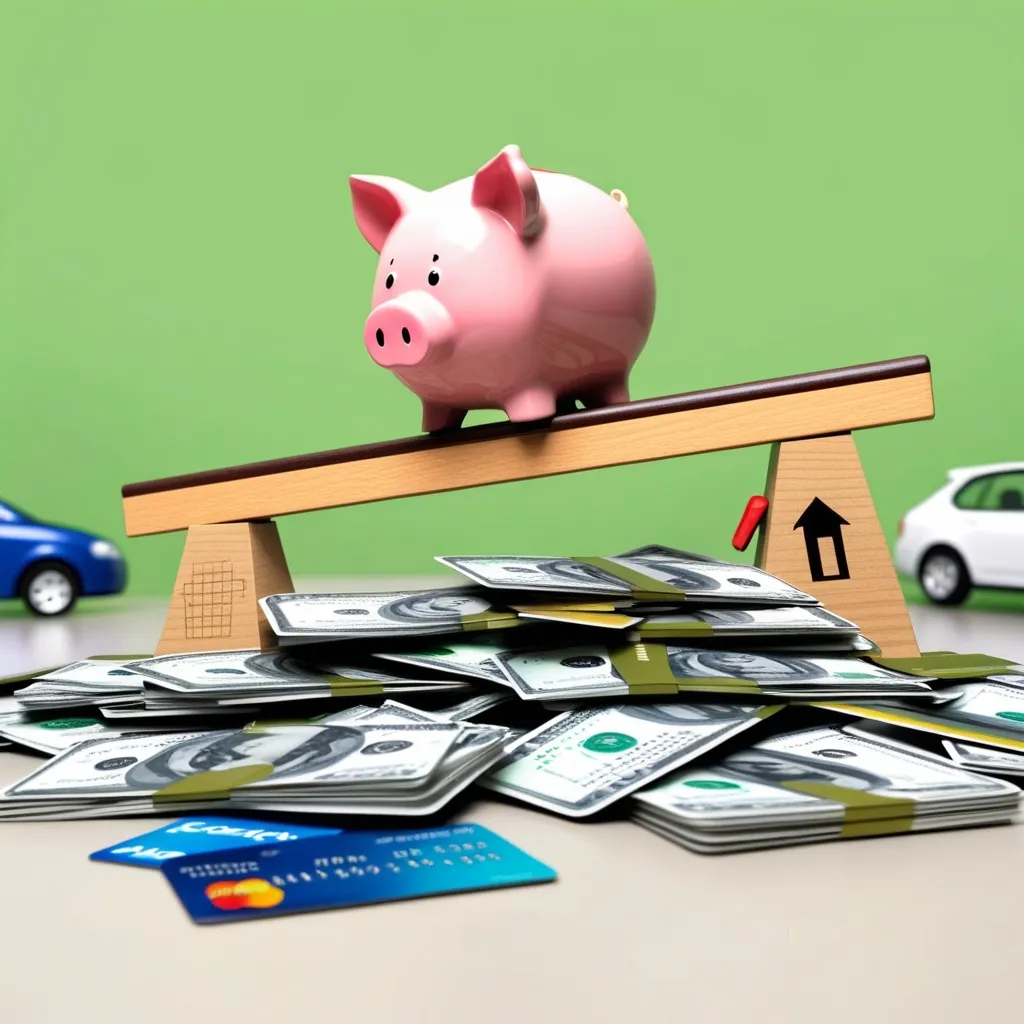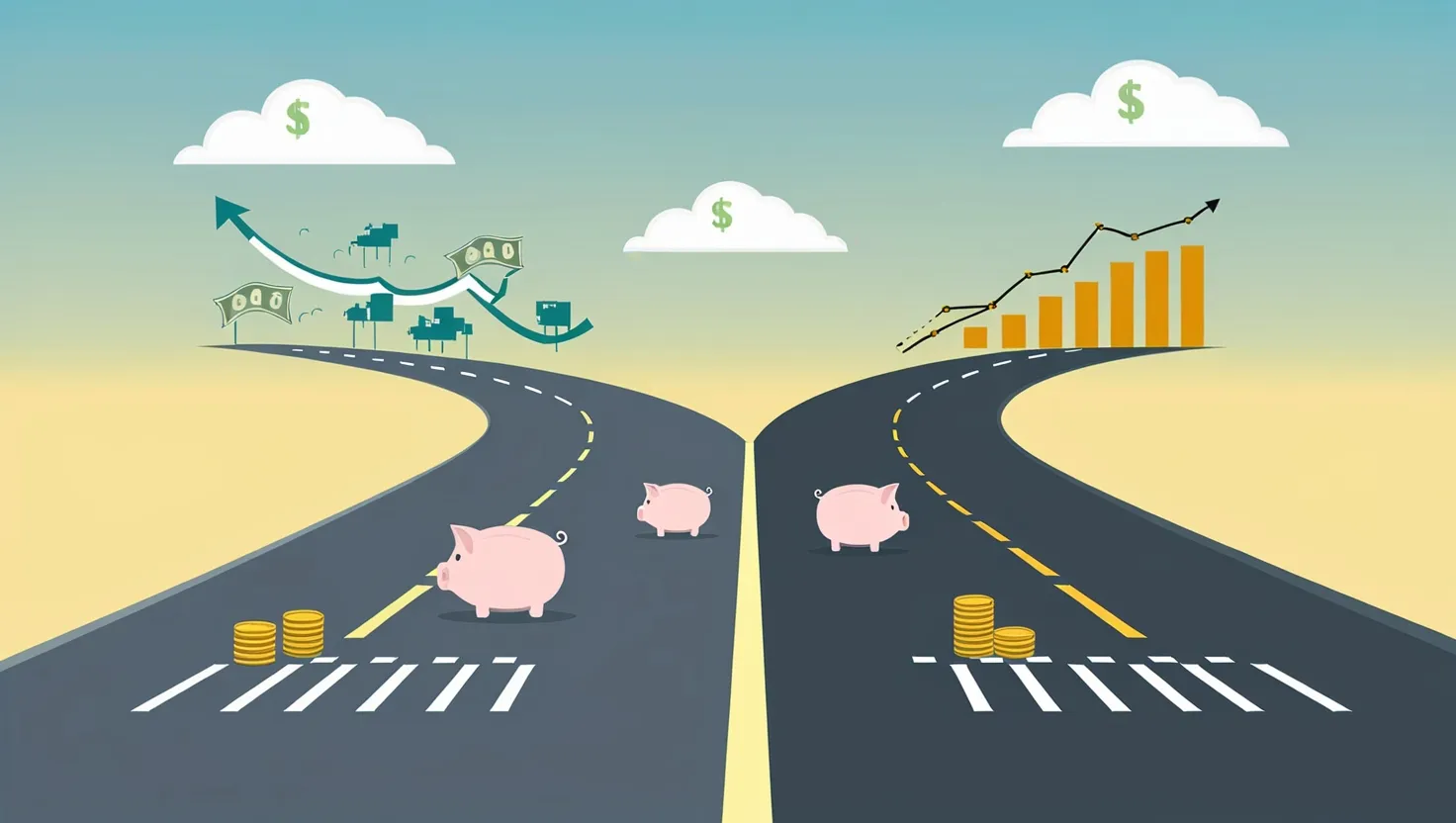The Power of Reverse Budgeting: 8 Practical Ways to Create a Debt-Free Lifestyle
Have you ever felt that traditional budgeting methods leave you with nothing to save at the end of the month? Perhaps it’s time to flip your financial approach on its head. Reverse budgeting—also known as the “pay yourself first” method—offers a refreshing alternative that prioritizes your financial goals before daily expenses.
Reverse budgeting is a strategy where you allocate money to savings and financial goals first, then spend what remains on other expenses[1][2]. Unlike traditional budgeting that often leads to saving whatever is left after spending, this method ensures your most important financial priorities receive attention before discretionary spending occurs[2].
“Do not save what is left after spending, but spend what is left after saving.” - Warren Buffett
This approach is particularly powerful because it treats your future financial security as a non-negotiable expense. By considering savings first and spending second, you essentially pretend your paycheck is smaller than it actually is[2]. The result? Consistent progress toward your financial freedom without the constant struggle of tracking every penny.
What makes reverse budgeting different from traditional methods? While conventional budgeting requires tracking all expenses and treating savings as an afterthought, reverse budgeting flips this concept—prioritizing savings and investments above everything else, giving you freedom to spend what remains[3].
Let’s explore eight practical ways to implement reverse budgeting for a debt-free lifestyle:
- Set up automatic transfers that happen immediately after payday. This simple step removes the temptation to spend before saving. Direct specific percentages to dedicated accounts based on your financial goals. A basic framework might include 15% of gross income to retirement, 10% of take-home pay to an emergency fund, 20% to debt elimination, 50% to living expenses, and the remainder (approximately 5%) for discretionary spending[2][4].
Is your current banking setup making automatic transfers easy or difficult? Consider switching to accounts that allow scheduled transfers without fees.
- Create a debt dashboard to track your progress. List all debts with their total amounts, interest rates, minimum payments, and projected payoff dates. Review this weekly to maintain motivation and adjust your strategy as needed. Seeing your debt decrease can provide powerful psychological reinforcement for your new habits.
“The secret of getting ahead is getting started. The secret of getting started is breaking your complex, overwhelming tasks into small, manageable tasks, then starting on the first one.” - Mark Twain
- Implement a cash envelope system for variable spending categories. After your savings and fixed expenses are handled, place cash for groceries, dining, entertainment, and other variable expenses in dedicated envelopes. When the envelope is empty, that category’s spending stops until the next pay period. This physical limitation helps prevent the overspending that often leads to debt.
Have you noticed how differently you feel when paying with cash versus a card? How might this awareness change your spending habits?
-
Practice zero-based spending reviews every Sunday evening. Take 15 minutes to check your accounts and allocate any unspent discretionary funds toward debt payments. This habit ensures that “extra” money doesn’t disappear on impulse purchases but instead accelerates your journey to financial freedom.
-
Develop a “pause button” strategy by creating mandatory waiting periods for purchases. The waiting period should increase with the cost: 24 hours for purchases over $50, 72 hours for purchases over $100, and so on. This simple delay often reveals which purchases are truly necessary and which are momentary wants.
-
Build a targeted emergency fund to prevent new debt. Financial emergencies happen to everyone—the question is whether you’ll handle them with savings or credit cards. Start with a mini-emergency fund of $1,000, then work toward three to six months of essential expenses. This safety net prevents the debt cycle from restarting when unexpected costs arise[3].
What’s the most recent “emergency” expense you faced? Would an emergency fund have changed how you handled it?
- Create a debt-free celebration timeline with small rewards at milestone points. Perhaps after paying off 25% of your debt, you enjoy a special meal at home. At 50%, maybe it’s a day trip somewhere enjoyable. These pre-planned, budget-friendly celebrations acknowledge progress and maintain momentum without derailing your financial goals.
“It’s not about perfect. It’s about effort. And when you bring that effort every single day, that’s where transformation happens. That’s how change occurs.” - Jillian Michaels
- Implement quarterly spending audits to identify and eliminate recurring expenses that don’t align with your financial priorities. Subscription services, membership fees, and automatic renewals often fly under the radar but can significantly impact your ability to save and pay down debt. A regular review ensures your money goes where you truly want it to go[4].
The beauty of reverse budgeting lies in its simplicity. Rather than tracking dozens of spending categories, you focus on saving a predetermined amount and then spend the rest as needed or desired[2]. This approach reduces the mental load of budgeting while accelerating progress toward your most important financial goals.
Studies indicate that 56% of Americans couldn’t cover a $1,000 emergency expense[3]. Reverse budgeting directly addresses this vulnerability by making savings automatic and non-negotiable. By putting your financial goals first, you focus on the big picture and reduce impulsive spending that often leads to debt.
Is reverse budgeting right for everyone? Perhaps not. Those with high-interest debt or irregular income might need modifications to this approach[2]. However, for many people who have tried traditional budgeting without success, the reverse budgeting method offers a refreshing alternative that feels less restrictive while producing better results.
“The habit of saving is itself an education; it fosters every virtue, teaches self-denial, cultivates the sense of order, trains to forethought, and so broadens the mind.” - T.T. Munger
To make reverse budgeting work effectively, consider these additional tips:
Automate as much as possible. Set up direct deposits to your savings accounts on payday so you never see the money in your checking account. What can’t be tempted can’t be spent.
Review and adjust periodically. As your income, expenses, and goals change, your reverse budget should adapt accordingly. Schedule quarterly reviews to ensure your system still serves your needs.
Celebrate progress, not perfection. Financial transformation is a marathon, not a sprint. Acknowledge each step forward, learn from setbacks, and keep moving toward your debt-free goal.
Have you considered how your life might change once you’re debt-free? What would you do with the money currently going toward interest payments?
Reverse budgeting represents a fundamental shift in financial thinking. Instead of viewing saving as what’s left after spending, it positions saving as an essential priority—something that happens before discretionary spending ever enters the picture[1]. This simple reordering of priorities can transform your financial trajectory and create a sustainable path to a debt-free lifestyle.
The next time you receive a paycheck, try this experiment: immediately transfer a percentage to savings before paying any other bills or expenses. Even if you start small—perhaps just 5%—you’ll begin building the habit that forms the foundation of reverse budgeting. From there, you can gradually increase your savings rate and accelerate your journey to financial freedom.
What’s stopping you from trying reverse budgeting today? The simplicity might surprise you, and the results could transform your financial future.






